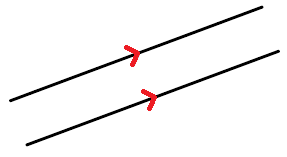Did you know?

Parallel
A set of lines or curves that never meet (no matter how long they are extended) are said to be parallel.
They will always be the same distance apart.

Did you know?

Scale Drawings
Many real-life objects are too big or too small to be drawn as they really are.
Scale drawings allow each dimension of an object to be increased/decreased in a given ratio, hence maintaining the relationships between all the lengths of the object.
Did you know?

I saw my maths teacher with a piece of graph paper earlier today.
I think she must be plotting something.
Did you know?

Trigonometry
Trigonometry looks at the relationships between sides of triangles and their angles.
Three main functions are used in trigonometry: sine, cosine and tangent.
Did you know?

Zero
The term sifr (empty in Arabic) was translated into the Latin as zephyrum, which ended up in Italian as zephyr. Zephyr later contracted into the Venetian zero with which Fibonacci decided to name the 0.
Did you know?

Cartesian Geometry
We owe our coordinate system to French mathematician René Descartes (1596-1650). He developed this system in which each pair gives us the position of a point with respect to two fixed perpendicular lines, called coordinate axes.
Did you know?

Why was ten afraid of seven?
Because seven eight nine.
Did you know?

Solids
A solid is a 3-dimensional object that can be any shape or size.
Many solids have particular properties (spheres, cones, cylinders, etc...).
Did you know?

Credit Balance
The amount of money you have in your bank account.
